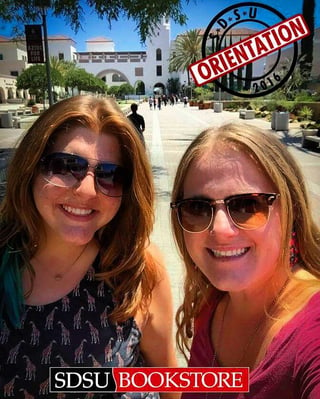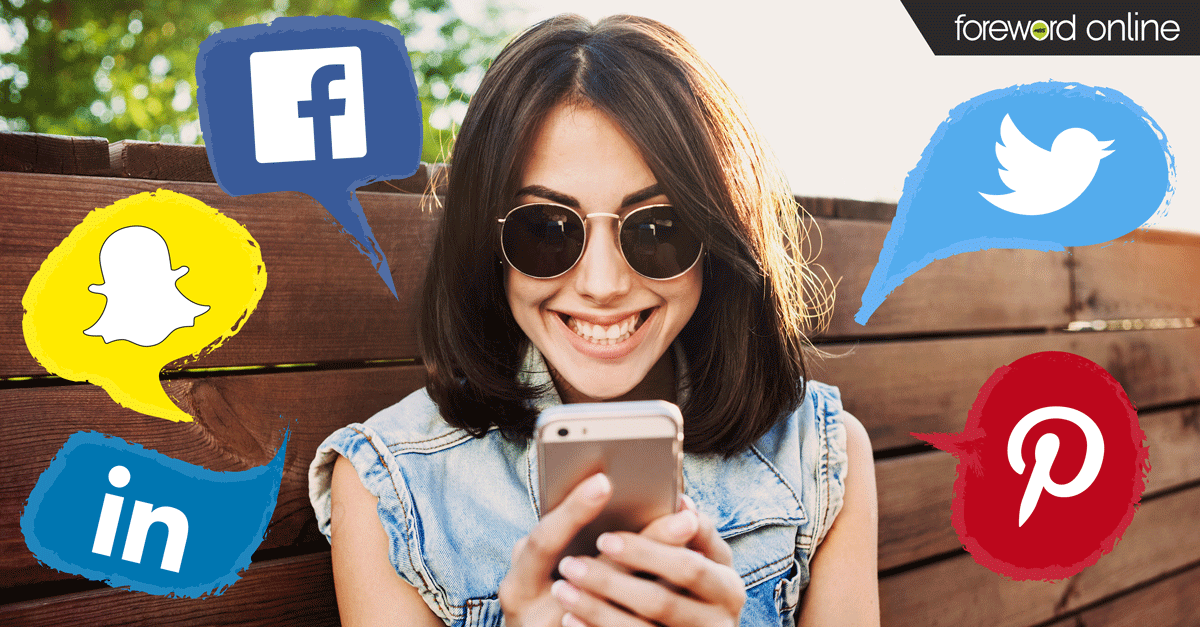If you’re on Snapchat, have you seen a lot of geofilters popping up on people’s stories? You know, those little graphical overlays that feature an illustration of a location or event at which the photo was taken and uploaded?
These geofilters are a fun way for Snapchat users to show where they’ve been and what they’ve been doing, even beyond what they can fit in the frame on their smartphones. Though they originally started out as non-commercial enterprises, earlier this year Snapchat began allowing businesses to set up geofilters as well. This is an exciting opportunity for college stores, whose customers hold a perhaps disproportionately large chunk of Snapchat’s user base.
So how do you utilize geofilters to help promote your store or any events you are holding? There are a lot of ways you can go about doing it, so we’ve collected some best practices and real-world examples of company-driven geofilters in action.
First off, how do they work?
There are actually two types of geofilters, but only one applies to you: the on-demand filter. These cover a smaller geographical location and are temporary, so they’re typically used to promote things such as concerts, sales, parties or other events. You’ll build your filter and upload it to Snapchat for approval and once it gets the go-ahead you pay for the amount of time you want your filter to be usable in a certain location.
To set one up, simply create or log in to your Snapchat account, go to Snapchat's geofilter site and follow these steps:
- Design your logo
- Snapchat has Photoshop and Illustrator templates available to download. If you are not comfortable with designing your own template, there are lots of sites and services where you can pay to have one designed for you — just keep in mind that will naturally raise your budget
- Make sure it's the right size and file type
- Your geofilter will need to be uploaded as a .png 1080 pixels wide by 1920 pixels tall. The templates Snapchat provides should help you draw your design to that size automatically.
- Geofence and determine a time frame
- When uploading, you'll draw out exactly where you want your geofilter to be available on Google Maps, and you'll enter the geofilter's duration into an event box. Remember that area and duration both affect the price you end up paying, so a geofilter covering just your store and lasting a few hours will be cheaper than a geofilter covering half of your campus for several days.
- Submit for review
- Snapchat will review and approve your geofilter before you're allowed to use it. Times vary, but approval can take about 24 hours. Once approved, your geofilter will go live for the duration you've selected.
Of course, designing and setting up geofilters is only part of the process. There are a variety of best practices you can use to make sure your geofilters are as effective and eye-catching as possible. After all, you want people to use them and share them with friends.
Tip 1: Go big, or go small
If your geofilter is likely to be rejected if it covers too large of a portion of the screen, but that doesn’t mean it has to be a tiny stamp relegated to the corner. Snapchat discourages complete frames, so leave at least one border open when designing your geofilter.
That's also not to say every filter needs to be big, of course. Check out these small stamps that various airports around the world place in the corner of the screen for Snapchat users between flights.
Snapchat filters from various airports around the world! ✈ 👻 👻 Found any others? Let us know! #JFK #LAX pic.twitter.com/0xdw2pfEqn
— Snapchat GeoFilters (@snapgeofilter) May 4, 2015
The trick is to find the right fit for your store or your event. Are there already other geofilters on your campus that you can match stylistically? Are you announcing a big surprise flash sale on Snapchat and you want your geofilter to be as eye catching as possible for the duration? Experiment and try to find the right fit for the tone you want to set.
Tip 2: Promote your filter
While heavy-duty Snapchat users might find your filter organically, don't assume everyone will simply know it exists. After all, they'd have to coincidentally take a picture within your geofilter boundaries and flip through all of the other available filters to come across yours. Make sure to promote your geofilter so your fans know it's available. Post about it on Facebook or Twitter, and if you've already been using Snapchat and amassing followers there, go ahead and upload your own selfies or shelfies using the filter to your story. That way, students will come in to use it and share their photos, thus making all of their friends aware, and so on. It's an advertising campaign designed for users to share!
Tip 3: Time your event
It's helpful to base your geofilter campaign around an event or time when lots of people will be out on campus near your store. For example, the SDSU Bookstore published a geofilter for their store to coincide with SDSU's new student orientation.
 Aztec Shops Associate Director of Marketing Ben Eisenstein says that the timing really pays off in terms of usage.
Aztec Shops Associate Director of Marketing Ben Eisenstein says that the timing really pays off in terms of usage.
"We’ve done geofilters for a few events now, and I think stores can expect somewhere between 25-35% participation among the available population," Eisenstein said. 'If there’s 1,000 people that come to your event, we found we can expect about a third of them to utilize the filter we bought for that event. To me that seems very good, and maybe other stores can even improve on that."
Picking an already popular event for your first geofilter campaign is a smart move, but what's most important is that students use it while the event is still going on. It can create an immediate increase in foot traffic as it capitalizes both on students' sense of peer validation and their fear of missing out.
"Say you’re having a sale and you sent out emails or posted on social media, but people ignored it or didn’t see it," Eisenstein said. "But when they see their friends posting about it with the tag on their story, whether it’s a sale centered around back to school or Halloween or grad fest, they think 'hey, that’s worth checking out.' It’s a powerful tool for third party validation from friends they trust, and it creates a coolness factor for their friends."




